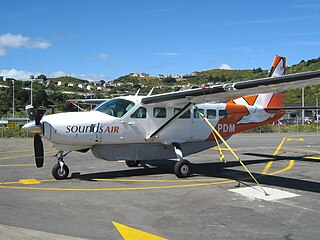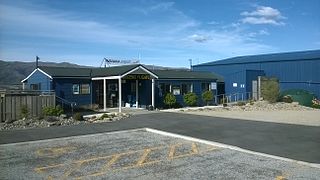Mesa Airlines, Inc., is an American regional airline based in Phoenix, Arizona. It is an FAA Part 121–certificated air carrier operating under air carrier certificate number MASA036A issued on June 29, 1979. It is a subsidiary of Mesa Air Group and operates flights as American Eagle and United Express via respective code sharing agreements with American Airlines and United Airlines. It serves more than 180 markets in the Western Hemisphere. In a 1997 article from the Journal of Air Transportation, Mesa's safety record was noted as having the fewest incidents among domestic regional airlines at that time. Mesa filed for Chapter 11 bankruptcy in January 2010, hoping to shed financial obligations for leases on airplanes it no longer needed and emerged from bankruptcy in March 2011. In November 2017, Mesa opened a new training center in Phoenix. The 23,000-square-foot facility features a full-size CRJ-200 cabin trainer aircraft, 14 classrooms, and has the capacity to train 300 crew members at one time.

Christchurch Airport is the main airport that serves Christchurch, New Zealand. It is located 12 kilometres (7.5 mi) to the northwest of the city centre, in the suburb of Harewood. Christchurch (Harewood) Airport officially opened on 18 May 1940 and became New Zealand's first international airport on 16 December 1950. It is the third busiest airport in New Zealand, after Auckland and Wellington, by both annual passengers and aircraft movements. Christchurch and Auckland are the only airports in New Zealand that regularly handle Boeing 747 and Airbus A380 aircraft. The airport is curfew free, operating 24 hours a day.
Tasman Empire Airways Limited (1940–1965), better known as TEAL, is the former name of Air New Zealand Limited (1965–).
New Zealand National Airways Corporation, popularly known as NAC, was the national domestic airline of New Zealand from 1947 until 1978 when it amalgamated with New Zealand's international airline, Air New Zealand. The airline was headquartered in Wellington.
Aspiring Air was an airline based in Wanaka, New Zealand. It operated charter pleasure flights around New Zealand's Southern Alps and scheduled services three times daily to Queenstown, connecting with Air New Zealand. Its main base was Wanaka Airport.
Air Post was a cargo airline based in Auckland, New Zealand. It operated night postal services for New Zealand Post in a joint venture agreement with Airwork, as well as operating ad hoc charter services. Its main base was located at Auckland International Airport.
Air Nelson was a regional airline based in Nelson, New Zealand. It was founded as an independent airline in 1979. Air New Zealand took a 50% shareholding in 1988 and 100% ownership in 1995. Air Nelson operated services on provincial routes under the Air New Zealand Link brand.
Air National was an airline based in Auckland, New Zealand. It operated domestic and international charter services and scheduled passenger services for Air New Zealand Link. Its main bases were Auckland International Airport
Mount Cook Airline was a regional airline based in Christchurch, New Zealand. Formerly part of the Mount Cook Group and latterly a subsidiary of Air New Zealand, it operated scheduled services throughout the country under the Air New Zealand Link brand. In December 2019, the brand name was retired with all services operated under the Air New Zealand banner.

Sounds Air is a New Zealand airline based at Picton. The airline was founded in 1986 by Cliff and Diane Marchant to provide low cost flights to the Marlborough Sounds. The airline has a maintenance facility at Omaka aerodrome with its Sounds Aero Maintenance division based there.

Woodbourne Airport trading as Marlborough Airport is a small, controlled airport located 8 km west of Blenheim in the Marlborough region of New Zealand, on State Highway 6, Middle Renwick Road. It is co-located with RNZAF Base Woodbourne in the Wairau Valley on the north-eastern corner of the South Island of New Zealand. The airport has a single terminal and 7 tarmac gates.

Wānaka Airport is an airport serving the rural town of Wānaka in Otago, New Zealand. The airport currently has scheduled commercial flights from one airline, SoundsAir, with Air New Zealand having ceased flights to the airport in 2013. It largely serves as a base for scenic and charter flights to destinations such as Milford Sound and Mount Aspiring National Park. The airport is located beside State Highway 6, on a plateau above the small village of Luggate, and is 10 km south-east of Wānaka township. It was originally a private airstrip owned by Tim Wallis, but in 1985 it became the main commercial airport for Wānaka, replacing Mt Iron Aerodrome.
XL Airways Germany GmbH was a German charter airline headquartered in Mörfelden-Walldorf, Hesse, operating charter and ad-hoc lease services, mostly out of Frankfurt Airport. The airline belonged, together with now defunct XL Airways France, to ALMC hf from Iceland.

Vincent Aviation was an airline based in Wellington, New Zealand. It operated air charter, freight and subcontract flights with a hub at Wellington International Airport. It was founded by Peter Vincent in 1992. On 28 May 2014 the Australian business was placed into receivership. On 24 October 2014 the New Zealand division was placed into receivership.

Westport Airport is an airport in Kawatiri, Westport, New Zealand.
Hood Aerodrome is an aerodrome, located in Masterton, New Zealand, it is located 1 NM South West of the town centre in the suburb of Solway. The aerodrome was named after George Hood, a pioneer Masterton aviator who died trying to make the first Trans-Tasman crossing in 1928. The aerodrome is used extensively for general aviation flights, and has also been used for commercial flights, Air New Zealand stopped serving the airport from 5 February 2014. Two new airlines have looked at re-instating a service to Auckland using larger aircraft but the runway will need to be lengthened to 1400m and widened to 30m first before it can start.

Air West Coast is an airline based in Greymouth, New Zealand.

Air Travel (NZ) Limited, a small airline based in Hokitika, was the first airline in New Zealand to fly licensed scheduled air services. They took delivery of their first De Havilland biplane aircraft at the end of 1934 and made it their business to carry passengers, mail and freight to remote parts of the West Coast. Their ambulance services were particularly welcome. They were well known outside their region for taking tourists to the Franz Josef and Fox glaciers.

Virgin Australia Airlines (NZ) Limited formerly Pacific Blue Airlines (NZ) Limited, was an airline based in New Zealand. It was established as the New Zealand subsidiary of Australian airline Virgin Blue. It was a fully owned subsidiary of Virgin Australia Holdings. It was renamed Virgin Australia Airlines (NZ) Ltd in December 2011 when its parent company decided to bring all its airlines under the one banner.

Newmans Airways Limited, trading as Newmans Air, was a wholly owned airline subsidiary of Newmans Group and served the New Zealand domestic market between 1985 and 1987. It was set up in direct competition with Mount Cook Airline to serve tourist routes. In 1986, Ansett Australia purchased a 50% shareholding, increasing this to 100% in 1987 when the airline was rebranded Ansett New Zealand.












